Ficus elastica
Just what makes that little old ant, Think he’ll move that rubber tree plant
Anyone knows an ant, can’t – Move a rubber tree plant
But he’s got high hopes, he’s got high hopes, He’s got high apple pie, in the sky hopes
So any time you’re gettin’ low, ’stead of lettin’ go, Just remember that ant
Oops there goes another rubber tree plant
Whether its because of, or spite of Frank Sinatra’s 1959 hit song High Hopes, a humble rubber plant can be found tucked in the corner of homes around the globe. Attractive, easy to care for and an air purifier extraordinaire, you should have high hopes when you too add this fabulous little ficus to your living space.
Ficus elastica is a tropical plant from north-east India and south to Indonesia. It is ideally suited to growing indoors in large pots. In tropical parts of Australia, and even in warm and moist parts of the southern states, it can be grown in the ground. But be warned, it stops being a demure house plant once its roots get into soil. It can grow to 30 – 40 metres tall, sometimes more, with a particularly vigorous growth habitat. It also develops a wide canopy, drops large amounts of leaf litter and blocks light from smaller plants below. The roots of the ficus elastica tree can invade pipes and sewage systems and break up footpaths and driveways. Be warned, this tropical treasure is not for your average suburban backyard. It is a fantastic addition to your indoor space though.
Rubber plants are reported be effective at removing formaldehyde from the air of our homes and offices*. Formaldehyde is a volatile organic compound (VOC) and is commonly is found in resins and adhesives. It is also found in facial tissues, tobacco smoke, plywood and chip board and many other products.
The Rubber Plant’s ability to absorb toxins increases with exposure. This is because the microbes living with the plants break down the toxin, feed on it and also multiply.
Growing
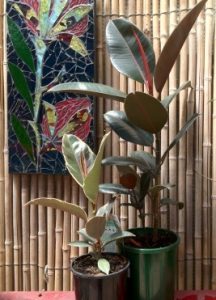 Rubber plants have thick, dark green leaves which contain a latex-like sap. They can get by with less light than many other indoor plants for short periods of time, but for good strong growth and a healthy plant, your ficus will do better with good light. One way to determine the amount of light is to hold a piece of white paper upright where you intend to place the plant. Place your hand about 20cm in front of the paper in the direction of the window. If you cannot see a shadow there isn’t enough light for the plant to stay there for any length of time.
Rubber plants have thick, dark green leaves which contain a latex-like sap. They can get by with less light than many other indoor plants for short periods of time, but for good strong growth and a healthy plant, your ficus will do better with good light. One way to determine the amount of light is to hold a piece of white paper upright where you intend to place the plant. Place your hand about 20cm in front of the paper in the direction of the window. If you cannot see a shadow there isn’t enough light for the plant to stay there for any length of time.
Placing the plant near a window provides more light but at night time it may become too cold. Rubber plants do tolerate fairly low temperatures, hence their ability to grow outside with gusto in even southern Australia. Give your tree a vacation outdoors for a week or two in the warmer months but make sure it is a shady spot. Indoors, avoid placing the plant pot near heaters or central heating vents. This can reduce the humidity around the plant and leave it susceptible to pest attack.
The stem of Ficus elastica is sufficiently strong that they do not require staking. Plants can grow up to 2.5 metres when grown indoors.
When potting up, choose a free draining potting mix and pot. Plants left sitting in water logged soil can drop leaves. Water lightly and allow the soil to dry between watering. Test the soil with your finger before watering. If the soil is damp and sticks to your finger your plant does not need a water. Many indoor plants are killed with kindness by well meaning owners who overwater them!
Though this plant does not have a high nutrient need it will benefit from a light monthly feed of weak liquid fertilizer or heavily diluted worm wee in the growing season.
Ficus elastica can become root bound quickly so the plant will need to be re-potted as it grows. Take the plant out of its pot (over some paper to catch any potting mix that is dislodged). If you can see roots the plant has outgrown the pot.
If the roots are wound around within the old pot, loosen them so that they don’t continue to grow in a circle. If the roots are tightly matted, cut them (slice down the side of the root ball in several places with a pair of secateurs), so the roots are able to grow out into the new potting mix.
Pest and disease problems
These plants are pretty tough and don’t suffer from too many issues. Generally if the plant looks unwell, is dropping leaves or yellowing off it’s a sign that it’s either in the wrong spot, root bound or getting too much or too little water.
Rubber Tree plants can succumb to attack by scale insects, spider mites, thrips or mealybug if their growing conditions are not ideal.
Note: Rubber plant material can be toxic to small animals (including cats and small dogs) as well as young children. The sap can irritate the skin and plant material can cause nausea and vomiting if ingested. Care should be taken in homes where little people and little critters have access to house plants. Those with severe latex allergies and sensitive skin should avoid growing this plant.
Refer also to our Fact Sheet on Indoor Plants:
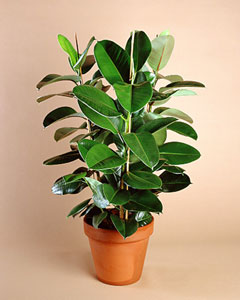 Information sources
Information sources
* Wolverton, B. C., 1996, Eco-Friendly House Plants, Viking Penguin.
Weidenfeld, G. & Nicolson, 1999, 500 Popular Indoor Plants for Australian Gardeners, Random House Australia
Related Articles:
The Benefits of Indoor Plants
On average, every Australian spends around 90% of their time indoors, be it at work, at home, at the shops or the local pub - a figure that is quite…


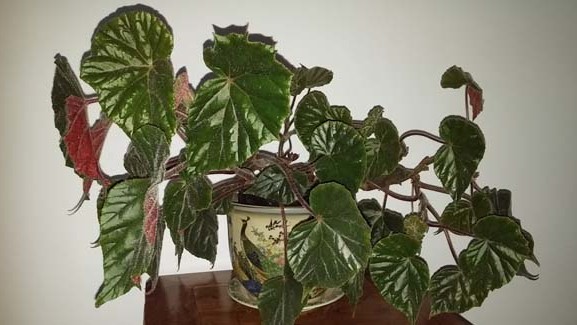
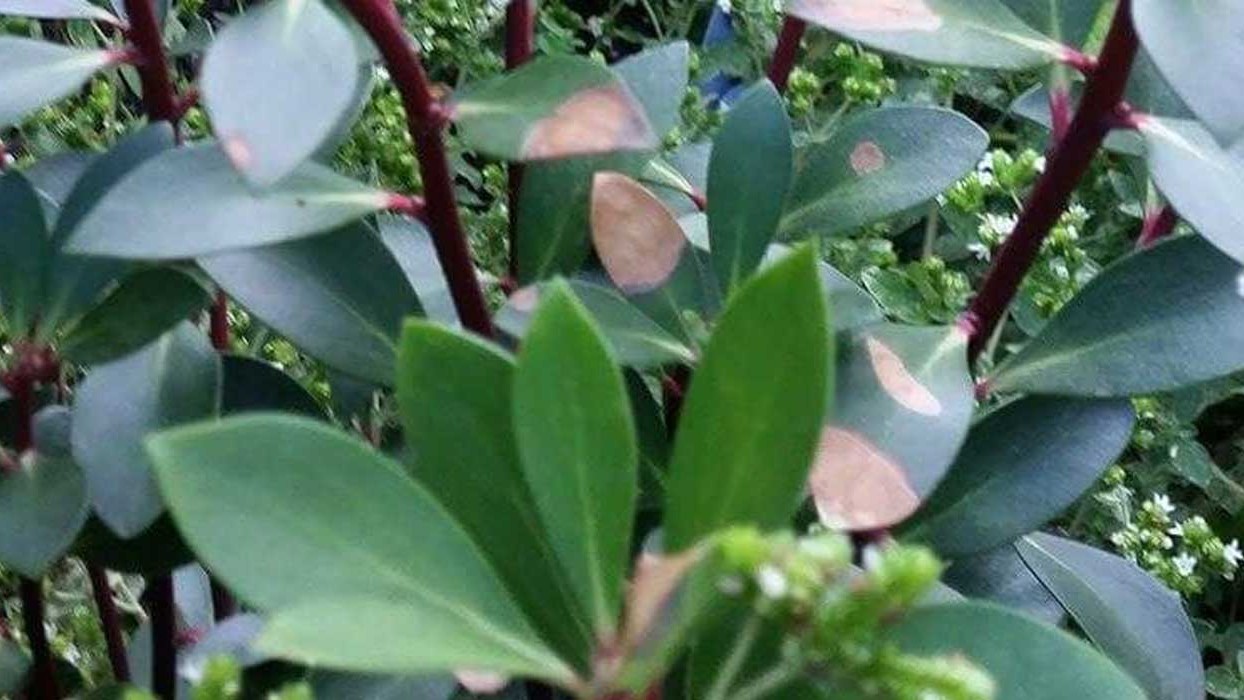
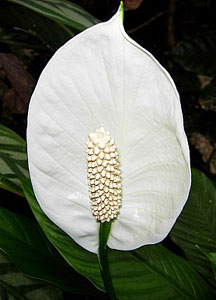 …
…